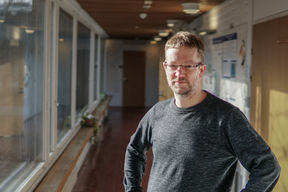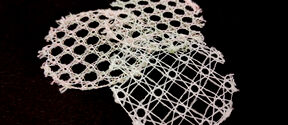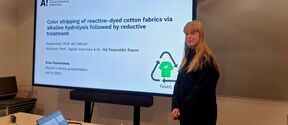Major European funding for research into new quantum materials

Quantum technology is being envisioned as a solution to a variety of challenges faced by humanity, from climate change to incurable diseases. However, new technology requires new and unprecedented materials. Producing these is a huge challenge for researchers.
A major soon-to-begin project aims to develop these critical building blocks to enable future quantum devices. Peter Liljeroth, professor of physics at Aalto University and director of the new Finnish Quantum Flagship, has received a 2,5 million euro grant from the European Research Council for research on quantum materials. The project will start at the turn of the year, and it is hoped to enable technologies that we may not yet even be able to imagine.
The term ‘quantum material’ does not refer to materials in the way the concept is usually understood. In contrast to conventional materials such as wood, plastic, or metal, quantum materials refer to special electrical properties that ordinary materials can acquire under certain conditions.
One example of a quantum material is a superconductor, characterized by its ability to conduct electricity without any resistance. Superconductivity occurs when a material – such as mercury – approaches absolute zero temperature. Superconductors have been known for over a hundred years and are routinely used in applications such as magnetic imaging (MRI).
However, new quantum materials are still needed. The problem is that they are easier to conceptualize in theory than to create in practice. This is because, although the raw materials needed for quantum materials can be found in nature, they only exhibit quantum properties when their electrons are made to interact in a specific way.
‘It would be incredibly useful if there were a systematic method for this. That way, we could create and fine-tune new quantum materials,’ Liljeroth explains the goal of the research.
Liljeroth's research group is particularly focused on so-called two-dimensional (2D) heteromaterials. To produce these, researchers combine two ultra-thin layers of materials, each only one or a few atoms thick, that normally do not occur together. In this artificial material, the researchers can control the interactions of the electrons, resulting in new material properties that are by far greater than the sum of their parts.
Various applications
Although the potential uses of new quantum materials can only be speculated on, inspiration can be found in current quantum devices.
Perhaps the best-known of these are quantum computers, which are expected to have astronomical computing power compared to conventional computers in the future. However, as Liljeroth describes them, they are currently still ‘underdeveloped, small-scale quantum computers’ plagued by numerous issues. New types of quantum materials could help solve these challenges by enabling the construction of new kinds of qubits—the fundamental units of quantum computers.
That said, quantum computers are just one example of quantum devices. For instance, quantum sensors, which are extremely sensitive measuring devices, already allow for the measurement of thermal radiation at a level that was only recently a dream.
The five-year project received a €2.5 million grant from the European Research Council. The research will make use of the OtaNano research infrastructure.
Read more
InstituteQ - The Finnish Quantum Institute (external link)
InstituteQ coordinates quantum research, education, and business in Finland

Finnish Quantum Flagship (external link)
Aalto University is coordinating the Finnish Quantum Flagship — an eight year project uniting quantum science and technology research institutions and and companies throughout Finland.

Aalto University to coordinate Finnish quantum initiatives in latest national flagship programme
The flagship unites dozens of research institutions, companies, and startups in new collaborative front

OtaNano
OtaNano is Finland's national research infrastructure for micro-, nano-, and quantum technologies

Read more news

Smart textiles are reshaping our understanding of materials – and interspecies communication
The PAST-A-BOT research project, funded by the European Research Council (ERC), is developing soft, intelligent textiles that could one day function as rescue robots, sound-sensing agricultural fabrics, or assistive clothing. At the same time, the project aims to rethink the way we approach materials research.
Master’s student showcases efficient color stripping of cotton fabrics
On December 9, master’s thesis student Elsa Vuorenmaa from the Textile Chemistry Group presented the results of her research on color stripping of reactive-dyed cotton fabrics.
Future makers research batteries, cryptography and plastic recycling
The Technology Industries of Finland Centennial Foundation awarded 3.5 million euros in research funding to eight projects, five from Aalto University.






